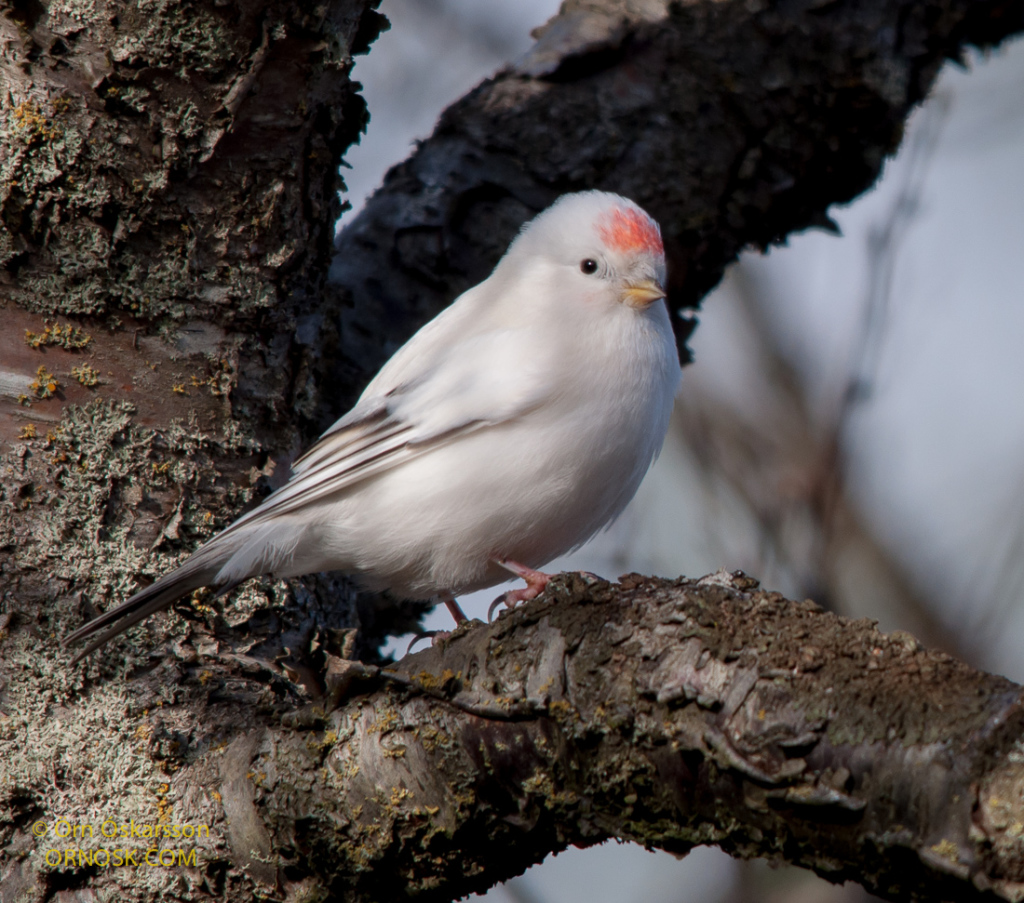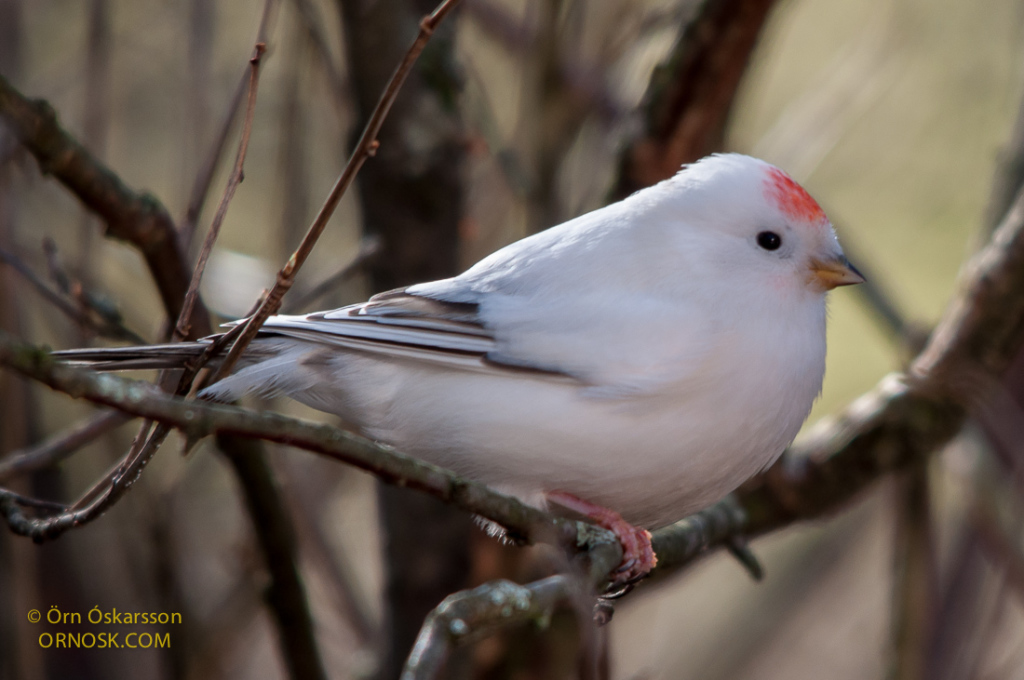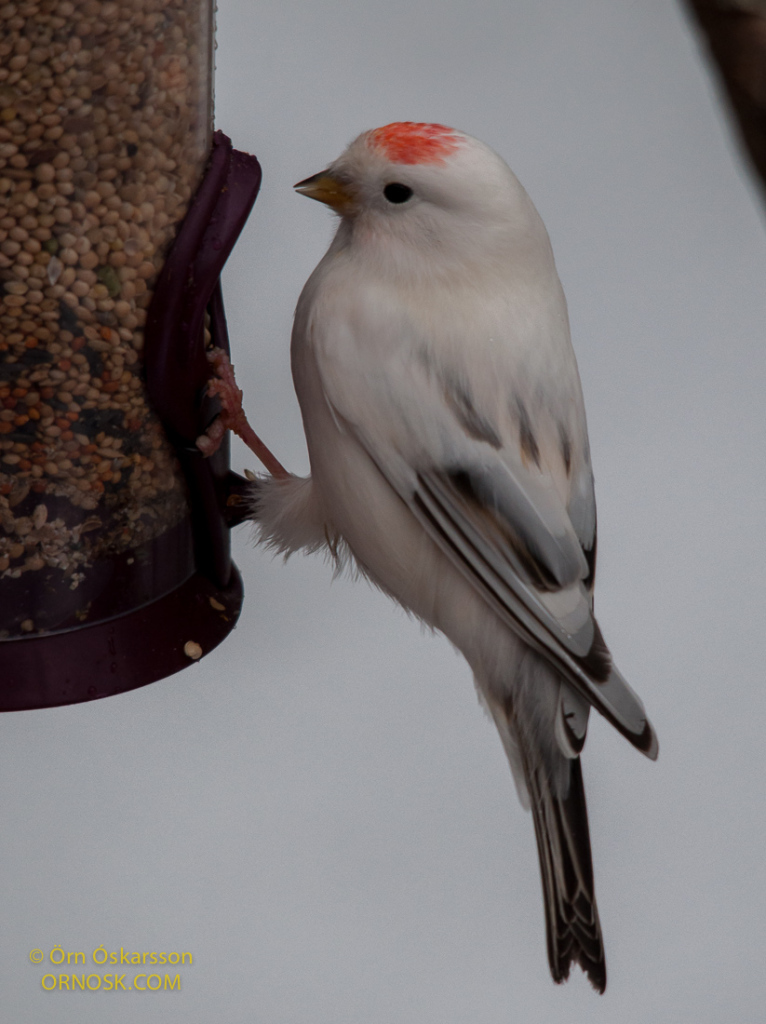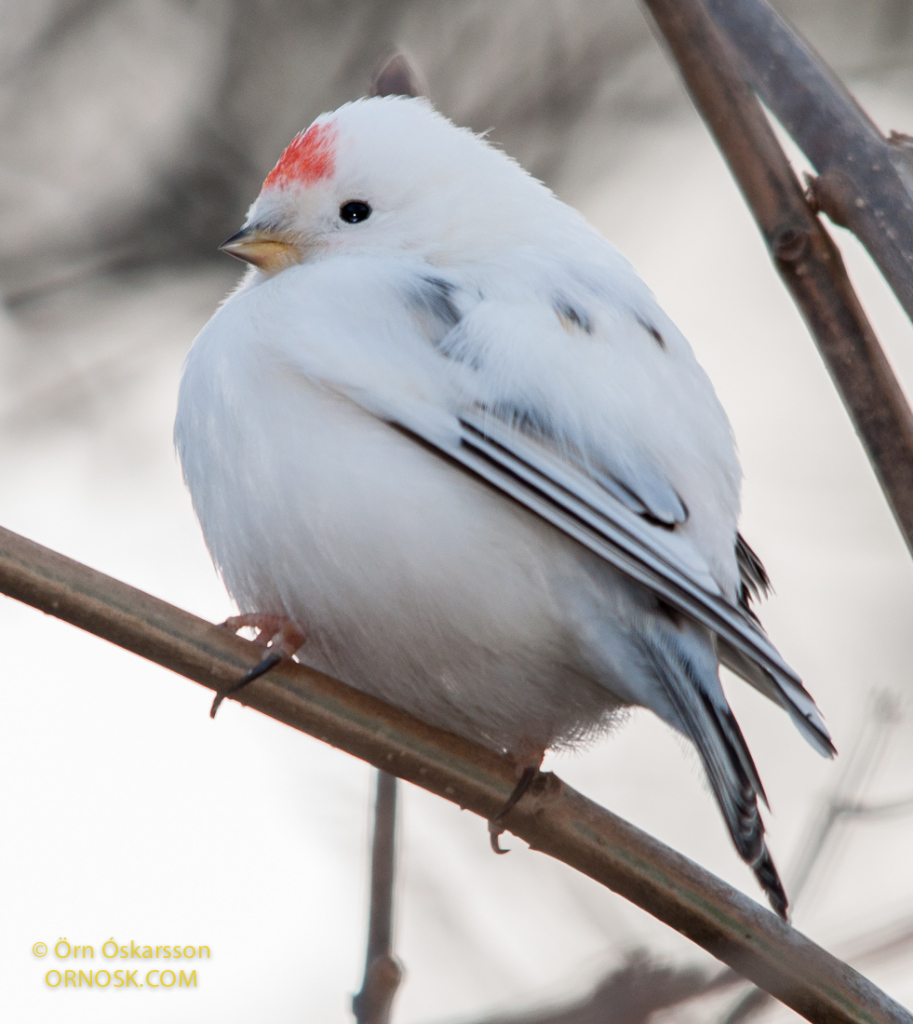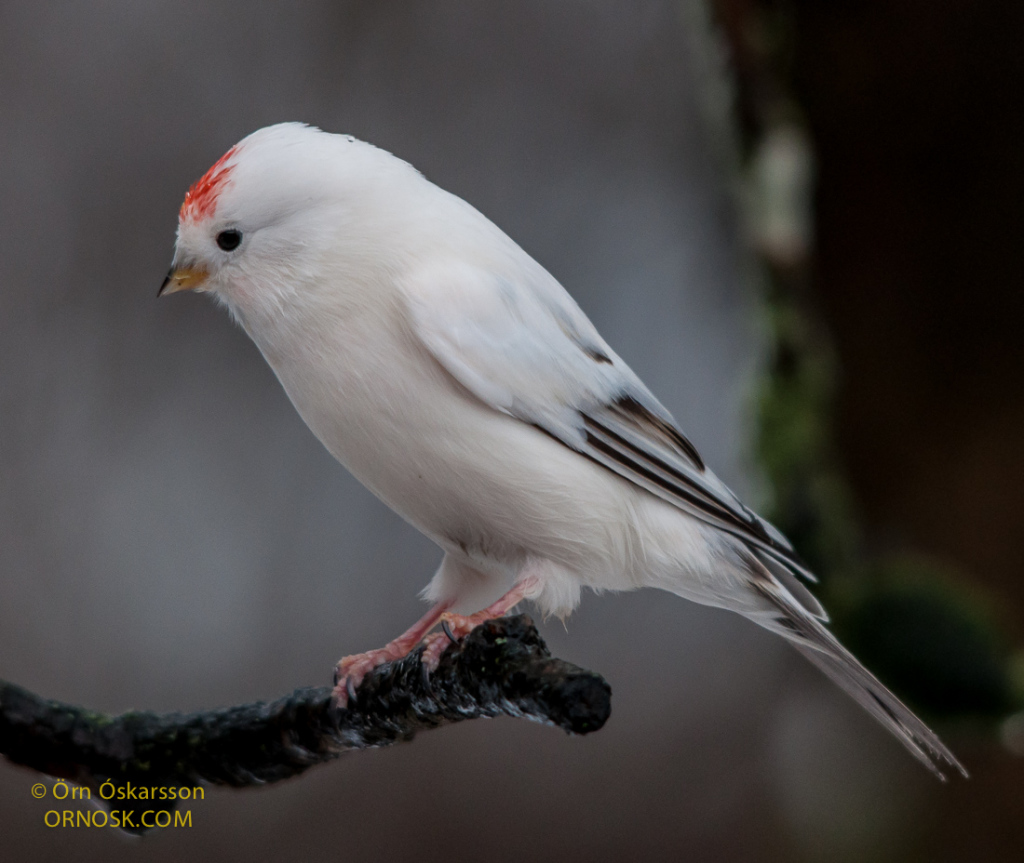Article: Örn Óskarsson
The Redpoll ( Carduelis flammea) is one of the most common birds in gardens in Selfoss all year round. It is a breeding bird in gardens and open areas in town. The chicks hatch from the beginning of May until the end of August. During the wintertime they multiply in numbers and there are sometimes several hundreds of them. When the seeds from their favourite trees are finished they come for food in gardens. They especially like sunflower seeds, finch seed and seed/fat balls. Most of the Redpolls are just the ordinary Icelandic ones but once in a while you see an individual bird that stands out from the rest.
In the middle of January 2011 news spread of a small white bird in gardens in Selfoss. After investigation the bird turned out to be an almost white Redpoll. The bird came for food in the gardens. With a group of other Redpolls it went from garden to garden and caught the attention of people everywhere it went. The local paper even had some news on this peculiar bird.
It then turned out that people first spotted the bird in October 2010. On February 23 the white Redpoll turned up in the garden at Fagurgerði 4 [my garden] and was seen there most days until the end of March. It mostly came to eat the finch seeds and balls of seed and fat, not the sunflower seeds that the other Redpolls like so much.
It was noticeable that the other Redpolls did not show it any hostility, they were almost respectful of it and kept a certain distance [which is a certain kind of bullying].
Seeing such an unusual and beautiful variation of a Redpoll is very uncommon and a lot of birders and photographers visited the garden during its stay in Fagurgerði [our garden].
The bird was last spotted March 25 in the garden but after that it was not seen again. In May news arrived of a white Redpoll near Apavatn [one hours drive from Selfoss]. We can not be certain whether it was the same bird but it is very likely.
It is very interesting for birders to spot such peculiar birds. Finding out what species they are is sometimes very difficult. The colours of the feathers do not match descriptions and some other features may also be missing. In some instances these extraordinary birds are hybrids of related species. They can also be birds with genetic flaws that manifest in different colour variations.
Individuals that are all white with red eyes, beaks and feet are categorised as albinos. They are homozyogous which means that the parents have both carried the same gene, in this instance a gene that leads to a failure in the production of melanin colorants. The red colour in the eyes is the colour of blood from the capillaries. Other colorants like carotin can explain the red colour of the feet and beak. However, there can also be birds with only a few white feathers, all white or light coloured, with ordinary eye, beak and feet colour. They are called half albinos. The Redpoll in Selfoss was half albino. The bird had melanin but it doesn’t work in the usual way to give the plumage and feathers its colour because the colour cells are not there. This is caused by a mutation. Sometimes the colour cells are missing in all feathers and then the bird is white or light coloured, or the colour cells may be missing in some feathers and then the bird becomes spotted.
The white redpoll in Selfoss is unique and the first news we have of a bird like that. Birds like these are not thought to live long in nature. They do not have the necessary colours to hide and are therefore easy prey to predators. Their plumage is also not as thick which sometimes affects their flying abilities and gives less shelter against the weather. Also the white colour reflects the sun’s rays, so on colder days the bird doesn’t get as much heat from the sun.
Whereas as colour and patterns play a big role in the mating process they are also less likely to find a partner so their genes are not passed on to future generations.
This article was written by Örn Óskarsson in December 2011 and appeared in FUGLAR nr. 8 – Desember 2011.
References:
Melissa Mayntz. About.com, Birding/Wild Birds, Bird Leucism.
http://birding.about.com/od/identifyingbirds/a/leucism.htm. (Visited October 16, 2011)
Project FeederWatch. Plumage variations: Albinism or Leucism? 2008.
http://www.birds.cornell.edu/pfw/AboutBirdsandFeeding/Albinism_Leucism.htm. (Visited October 16, 2011)

